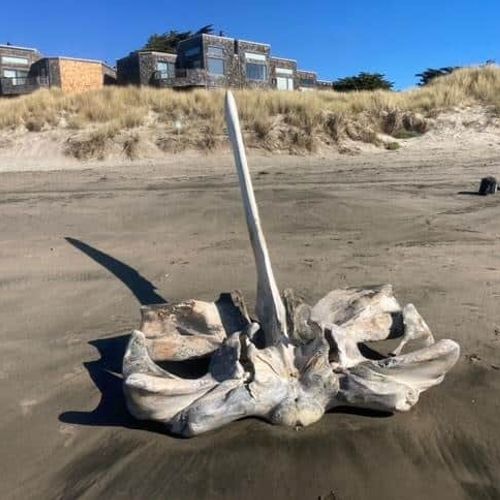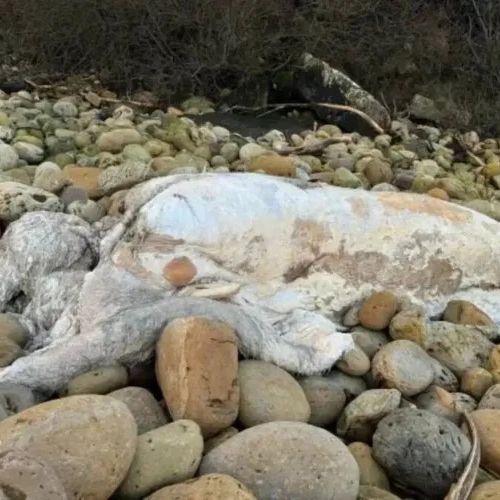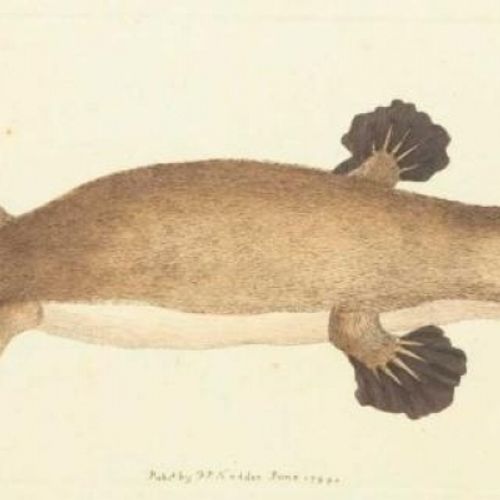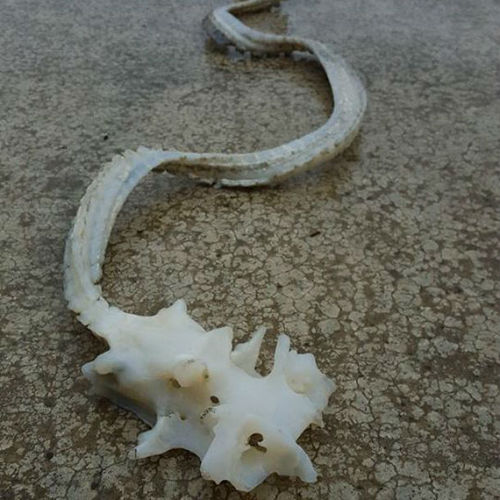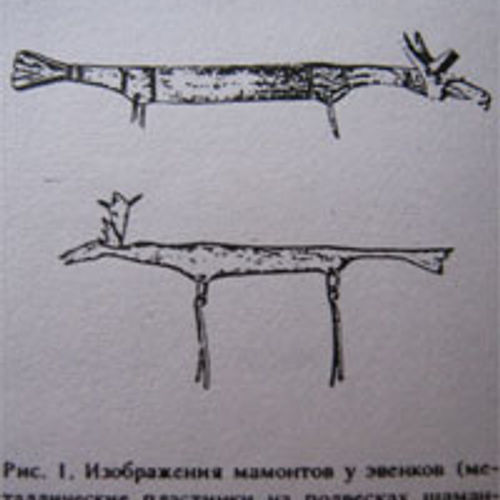
| Added | Sat, 30/10/2021 |
| Источники | Татьяна ДМИТРИЕВА «Уральский следопыт» №10, 1994 г.
|
| Дата публикации | Sat, 01/10/1994
|
| Феномены |
In the north of the Tyumen region, in the edge of forests, swamps and countless lakes, the Kazym River flows and flows into the Great Ob – almost opposite the ancient city and the current district center of Berezov.
The indigenous inhabitants of the Kazym region are Khanty hunters, fishermen, reindeer herders. The Khanty people know the terrain perfectly well and navigate huge spaces – you can't live in the taiga and tundra without it.
Conditions and lifestyle contribute to the preservation of local geographical names – toponyms in the memory of the people. A lot of legends and legends are kept by the Khanty toponomy of the Kazym River. One of the characters is a fantastic creature, which the modern aborigines of Kazym call Weight and consider a water animal. Describing him, the Khanty say: "white, lives in the water, in the pits," "like a whale, they say, floats up," "crawls out of the water, under the guise of a seal," "crocodile, digs the ground along the shore, lives in the water."
The actions of this creature explain the collapses of river banks, changes in the riverbed, the withdrawal of water from lakes, the formation of new channels and rivers.
"If he lies in a big lake, he will turn around and make a small river himself; if a new river appears, he changes the place."
Not everyone believes that weight is a real being. Here, for example, is a fragment of a fairy tale about a hare and a sedge known to all Khanty children:
...The hare sees: the weight is coming.
- Drink the water! - he says to ves.
- And what is the water to blame for?
- The fire does not flood.
- And what is the fire to blame for?
- Sedge does not light up.
- And what is the sedge to blame for?
- I began to eat, cut my tongue.
- So it's your greed…
This is how the Berezovsky Khanty Dmitry Grigoryevich Gindyshev told this tale in the bright twilight of a July night, when on one of the recent expeditions we had a long conversation with him, sitting on the upper deck of an old ship sailing along the Sosva.
There are several places on Kazym whose names mention weight.
To the south-east of the village of Yuilsk, on the left bank of the Kazym lies the large lake Vesyng-lor ("Lake of Weight"). Nearby is a forest with a holy place of the Hunts. The Hunts noticed traces of weight movement near the lake. "Semyon Vagatov drove the Buran once, saw that all the frozen moss was thrown away: he (weight) had gone somewhere."
On the right bank of the Kazym, near the mouth of the Sorum River, to the left of the mouth, there is a flowing lake-the Vesyng-veri staritsa ("Old Woman of Weight"). The Khanty of Sorum, Danil Petrovich Zakharov, said that in this old village "crocodiles live, animals are as big as sharks."
A little higher up the Sorum, not far from the lake Vesyng-veri, there is yar Ves-imisanghum ("Yar of the vesa woman"). There was also a holy place there, which the Khanty worshipped. Interestingly, this toponym mentions the "weight" of the female sex.
But the most mysterious name of the lake is Multy-velty-lor in the middle reaches of the Kazym. The toponym translates very strangely: "A lake where there is something."
"Something lives in this lake," they explained to us, "but they don't know what."
It turned out that fishing in this lake is dangerous, that some Khanty people do not eat fish from it, and that in it – "as if a scarecrow gets out of the water, it will appear, then it will leave again." One day one of the locals was driving along this lake, and he had a red scarf on his head. The weight saw - turned the boat over, drowned the gun and everything that was in the boat. Obviously, "The Lake where there is something" is a taboo name, it allegorically conveys information about a supernatural being who is not too favorable to man. The Khanty believe that if someone sees the weight, he will not live long.
Sometimes weights are simply called howl - "beast" (also taboo), and by analogy with a whale - vusyng putlang, literally "leaky nape". But the dictionaries of the Khanty language note that the name Vusyng putlang in the Kazym, Nizam and Obdorsky Khants refers to the beluga dolphin.
However, both dictionaries and ethnographic literature indicate that the word weight (wes) is used by various groups of Hunts to call a mammoth. So, the Shuryshkar khants have a Weight-tor – "Mammoth Lake", a Weight-tor-kurt – "Mammoth Lake Village", the Sredneobsky - Ves-emtorsan – "Mammoth Lake Stream", the Vakhovsky - Vesyng-emtor ("Mammoth Lake"), the Soni–Vesyng-Kurt River Khants – "Mammoth Village". But this creature is of a special kind: "a mammoth, a mythical animal living in water (especially in whirlpools) of an indeterminate kind, which can arise from various animals...", "a mammoth, a water spirit in the form of a mammoth" - this is how the dictionaries of the Khanty language explain what weight is.
How are the weight-water and that ancient shaggy, long-extinct relative of the elephant connected?
Ethnographic studies have established that the peoples of Siberia - the Khanty, Mansi, Selkups, Evenks, not being able to imagine the actual appearance of this extinct animal, considered the mammoth an underwater or underground animal with horns and did not doubt its real existence, which was confirmed by numerous finds of its bones and tusks. At the same time, the mammoth was endowed with both signs of a land animal (elk, deer) and a water animal and acquired the image of a half-beast-half-fish.
The idea of the mammoth as an underground creature is reflected in such a wonderful name as "earth bull" (deer), or "earth deer male", which is found among the Nenets (yang-khora), the Khanty (muv-khor, muv-khar, we-khor), Mansi (ma-khar). And among the Yakuts, the mammoth had the name u-ogusa – "water bull", and he was considered the master spirit of water.
At the same time, the Khanty of the Son River called the mammoth yink-howl – "water beast", but at the same time they believed that it lives in the ground and has large teeth or horns.
Among the Hunts, we meet with ideas about big horned pike, overgrown with fur, and about underground animals, sometimes starting such a struggle among themselves that the ice in the lakes breaks with a terrible crack. Both these and other creatures correlated with a mammoth, and it was believed that a very old elk, wild deer or bear that went into the water, an old pike, perch, ruff, as well as a dog, a hare and even a man who lived 150-200 years turns into a mammoth.
In the museums of our country there are images of mammoths, connecting signs of elk or deer with signs of fish, made by Evenks or Khanty.
The ideas about the mammoth among the peoples of Siberia, mainly those who inhabit its North, have received a pronounced religious coloring. The mammoth was considered a sacred animal, was attributed to the number of underground spirits at the disposal of shamans. It is no accident that the Khanty of Mozyam, Semyon Ivanovich Yukhlymov, a wonderful connoisseur and performer of the folklore of his people, called the two most important underground gods kursigen-vesyngen - "libra gods" and said that "all those who are underground" obey them. Places associated, according to the Hunts, with the habitation of the "mammoth"-weight, were considered holy among them.
Ethnographers who worked on Kazym in the 40s noted in the Kazym dialect the name muv-khor – "earth bull (deer)" for a mammoth, more precisely - for a moose, bear or pike who turned into it, who, having reached a very old age, according to the khants, do not die, but change their appearance, turning into a "muv-khora".
In a word, the Kazym Khanty preserved a stable image of the weight-water, animal real and at the same time fantastic, correlated with other creatures known to man living in the water - pike, whale, seal, shark, crocodile. In this comparative series, pike and whale deserve special attention.
It is known that Hunts, like Mansi, have a different attitude to the toothy predator than to other fish, and pike is not considered a fish. To the question whether there is a fish, you can answer:
"There is a pike, there are no fish."
The mentions of the whale in the descriptions of the weight must also not be accidental: a mammal from the dolphin family, the toothed whale beluga (sometimes called beluga), which lives in the Arctic seas, often enters large rivers, including the Ob, in pursuit of fish, and can even go upstream for a considerable distance. The Khants of the Ob village of Polnovat, located near the mouth of the Kazym River, have a legend about how some fabulous creature - not a fish, not a man, or the same vusyng-putlang – "leaky nape" - going down from the Ob river from the village of Komudvany, shouted the names of villages that it sailed past.
So the fantastic image of a water creature among the Khants and other peoples of Western Siberia had a real basis.
In conclusion, it should be noted that in the traditional ornamental images, which were previously associated with the sacred animals of the Kazym Khanty bear and mammoth, some residents of Kazym see fish, and many cannot give any explanation to the well-known ornament.
Новости со схожими феноменами
Log in or register to post comments




